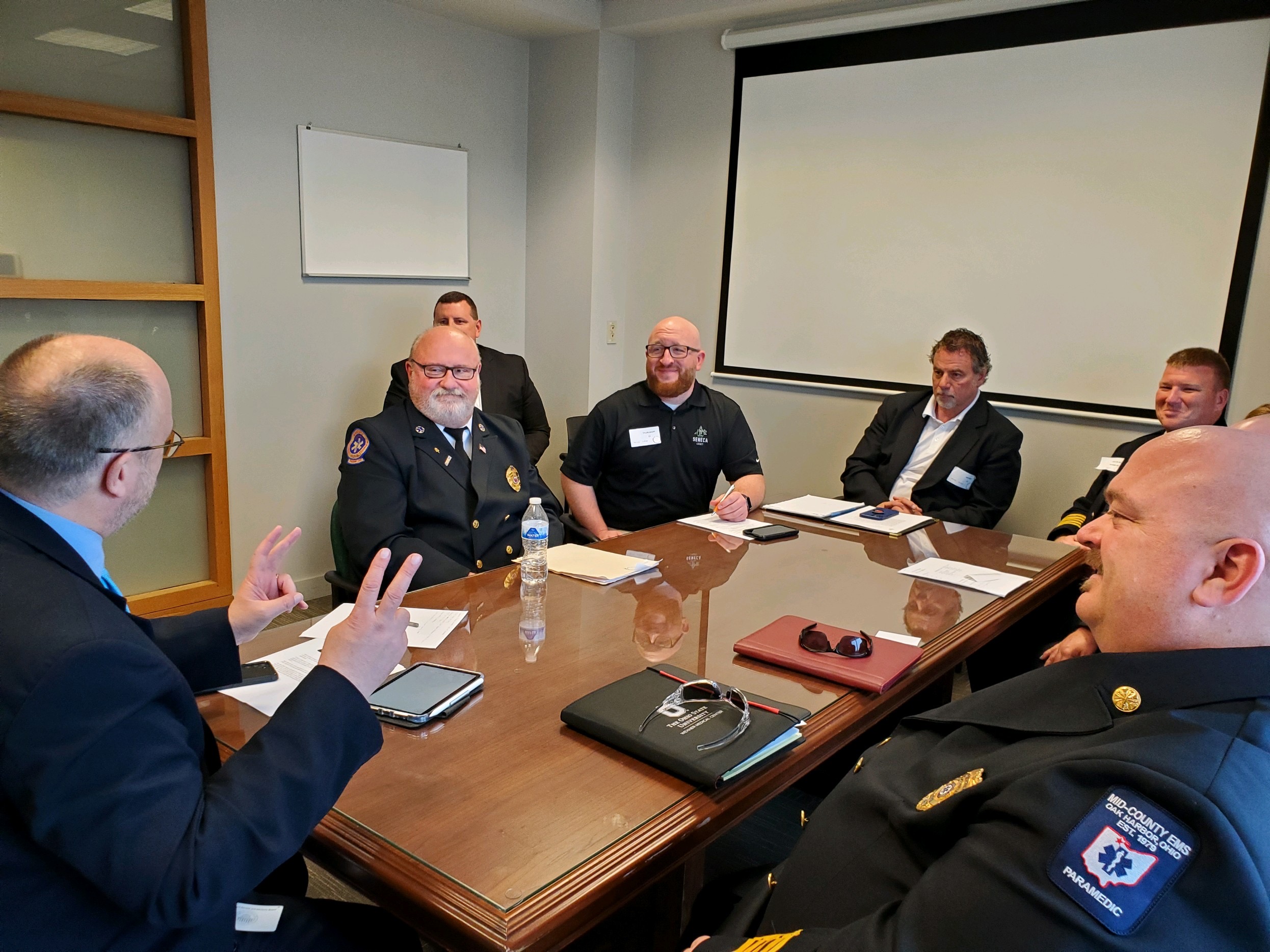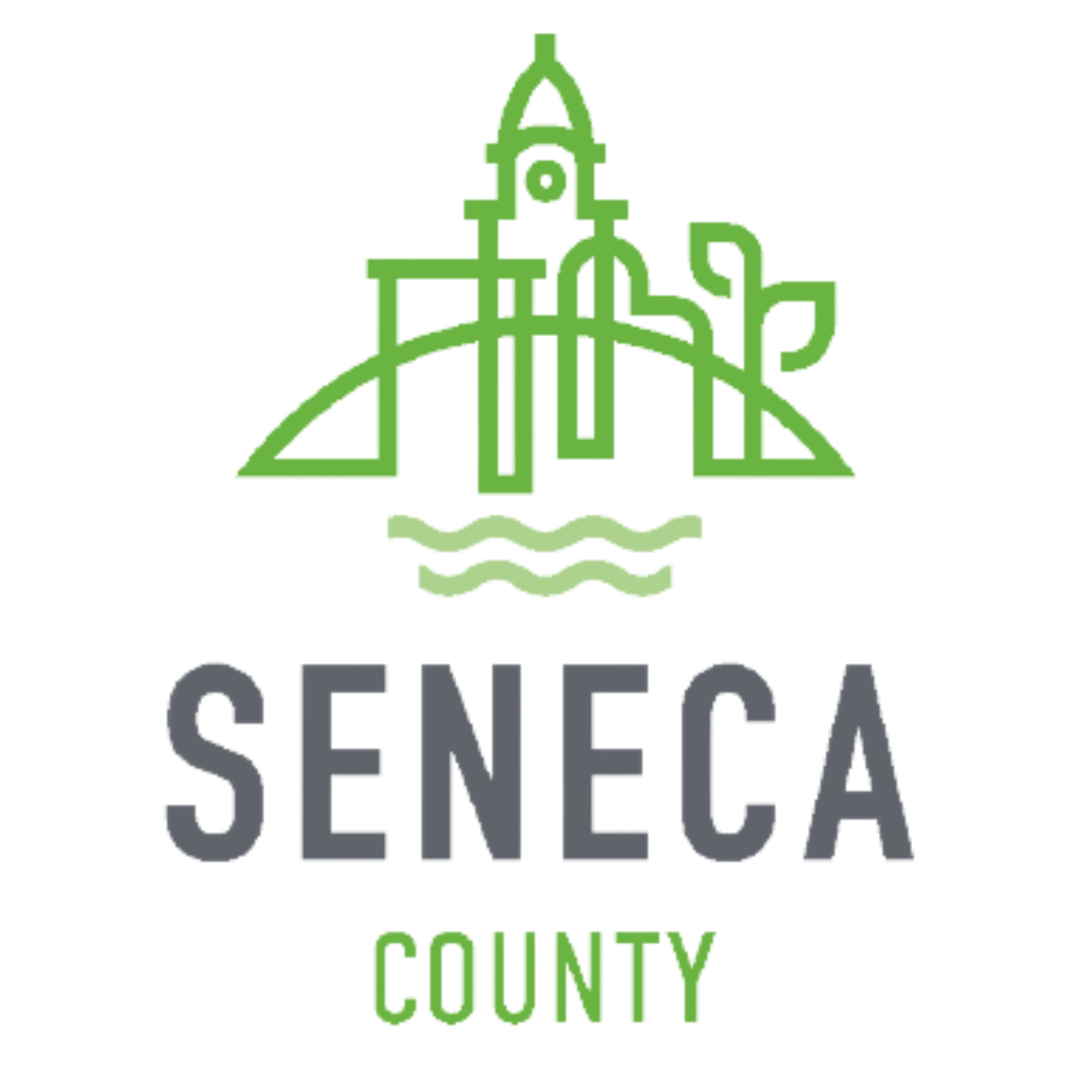EMS Director, Commissioners advocate for pro-EMS policies in Columbus Thursday
Seneca County EMS Director, Commissioners visit Columbus for EMS on the Hill
County leaders speak with state lawmakers about considering EMS as an “essential service”

[Columbus, OH – May 12, 2022] – Seneca County Emergency Services Director Ken Majors was accompanied by Commissioners Anthony Paradiso and Tyler Shuff, Mike Dittoe from High Bridge Consulting and county staff during the Ohio EMS Chiefs Association’s EMS on the Hill event in Columbus today.
The crew joined up with third-service EMS chiefs from across the state of Ohio to meet with several different state government officials to discuss important legislative priorities and ways that lawmakers can help EMS agencies provide the best possible service to those who need emergency medical care.
The three major legislative priorities and important considerations conveyed to legislators included the need for EMS to be considered as an “essential service” in the state of Ohio, the clear definition of what a third-service EMS agency is, and that Medicaid must help pay a larger portion of what it costs to execute an ambulance run.
Currently, law enforcement and fire protection are considered essential services in Ohio, but emergency medical services are not under this umbrella. According to OEMCSA, this change would help ensure access to quality EMS care for every citizen in the state. The lack of EMS as an essential service hinders the effectiveness and quality of the service across the state. If state lawmakers made EMS essential, it would improve access to federal and state money. According to ESO, a software company that works with EMS agencies, fire departments and hospitals to track and analyze service call data, about 70 percent of calls for service are for emergency medical reasons versus about 30 percent for fire protection. This data comes from fire departments that provide both EMS and fire protection, which leads us to the next point, which is an important distinction between fire departments that provide both services, and third-service EMS agencies like Seneca County EMS that only provide ambulance services.
The OEMSCA group is comprised mostly of governmental third-service agencies that have no connection to fire departments and have a primary focus on providing emergency medical services. Part of the discussions with lawmakers Thursday focused on this distinction, and how legislators and county citizens must better understand the mission of third-service EMS departments that provide solely EMS.
Finally, OEMSCA advocated for a Medicaid Supplemental Payout Program to help counties and third-service EMS agencies cover the rising costs of providing these essential services to citizens.
According to OEMSCA, when you call 911 in Ohio, the ambulance that shows up is almost always from a local governmental entity. Nearly all of these EMS agencies rely on local tax revenue to maintain operations because federal and state payments to ambulance providers have fallen far below the actual cost of providing care.
Information provided by OEMSCA states that it costs $750 to provide the crew, vehicle, supplies and equipment to respond to a Medicaid patient’s call for service. Medicaid reimburses just $150, meaning the local government loses $600 on that call. This makes the cost-share $100 federal, $50 state and $600 local. This is not how Medicaid was designed to work, and OEMSCA and Seneca County leaders urged state lawmakers to find ways to reduce the financial burden on local governments.
Currently, 12 states have a supplemental Medicaid payment program. One reimbursement mechanism offered by the Federal government that helps cover local costs is the Ground Emergency Medical
Transportation (GEMT) program. There is no cost to the state via this program. The state could enact this program through legislation, and it would then allow third-service agencies to receive federal funds to help alleviate some of these concerns.
Majors thanked the commissioners and state lawmakers and their staff, including State Rep. Gary Click and State Senator William Reineke, for spending the day working hard to understand important issues facing third-service EMS agencies.
“Emergency medical services are not often thought about until you or a family member is in a difficult situation and in a time of need,” he said. “Today’s EMS on the Hill event helped us bring awareness to the importance of these services. We had great discussions with many different state lawmakers, and we hope these talks can lead to changes that ultimately improve the quality of care and the access to care that all Ohioans should receive during a medical emergency.”
